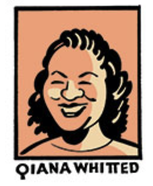|
Originally posted at The Hooded Utilitarian. Public outrage over the killing of 18-year-old Mike Brown in Ferguson, Missouri continues to amass its own tragic iconography. Handprints transform the so-called universal sign of surrender into a stronghold of dissent: “Hands up, Don’t shoot.” Hashtag memorials shape the interconnectivity of social media into a pictorial chorus of text: #BlackLivesMatter #JusticeforMikeBrown #ShutItDown. I think about my own son at two years old and already curling his brown fingers into Spider-Man web shooters, and vainly I hope that the right counter-visual will fix what’s wrong, or at least begin to impair what Matthew Pratt Guterl, refers to as “the familiar grammar of racial sight, through which a wallet becomes a gun or a Harvard professor becomes a burglar.” I also had the chance to consider how the call for racial justice registers through image when I toured the exhibit on “The Long March: Civil Rights in Cartoons and Comics” at OSU’s Billy Ireland Cartoon Library & Museum last month. Among the stately commemoration of landmark firsts – including incredible pages of original art from Pogo, Wee Pals, and Green Lantern/Green Arrow – the corner of the room displaying the editorial cartoons seemed louder and more demanding in their effort to picture the raucous discord of the moment. We can learn a great deal from the way Pittsburgh Courier cartoonist Sam Milai uses the Junior Astronaut Helmet as a visual metonym for the aspirations of a middle-class African American family (below), only months after Neil Armstrong walked on the moon: In another image, Bill Crawford speaks to fears over militant Black Nationalism in a cartoon that invokes the Ku Klu Klan to set the boundaries of acceptable (and respectable) protest in 1968:
|
AboutAn archive of my online writing on comics, literature, and culture. (Illustration above by Seth!) Categories
All
Archives
July 2020
|




 RSS Feed
RSS Feed